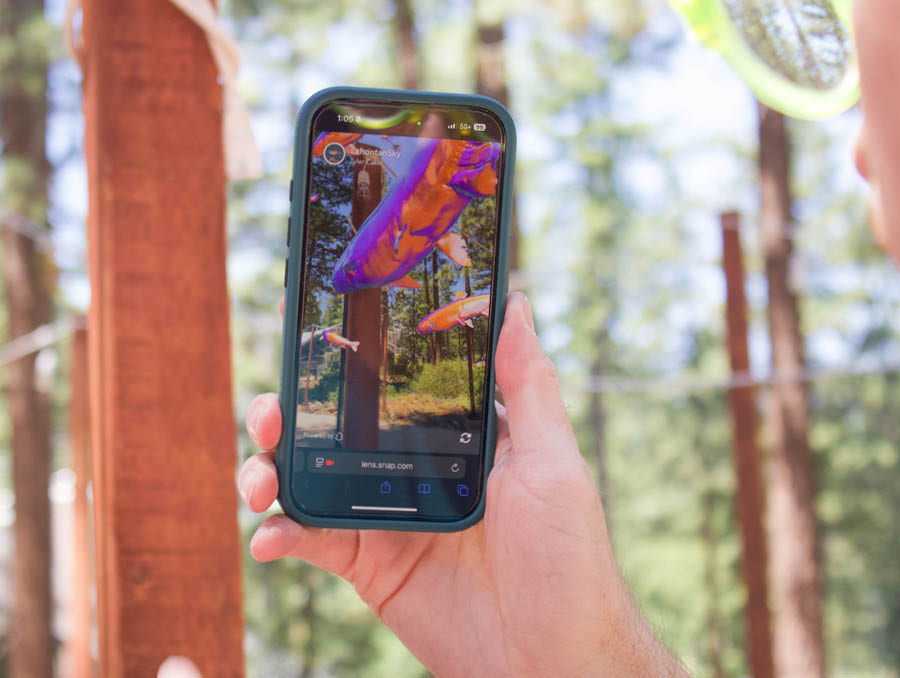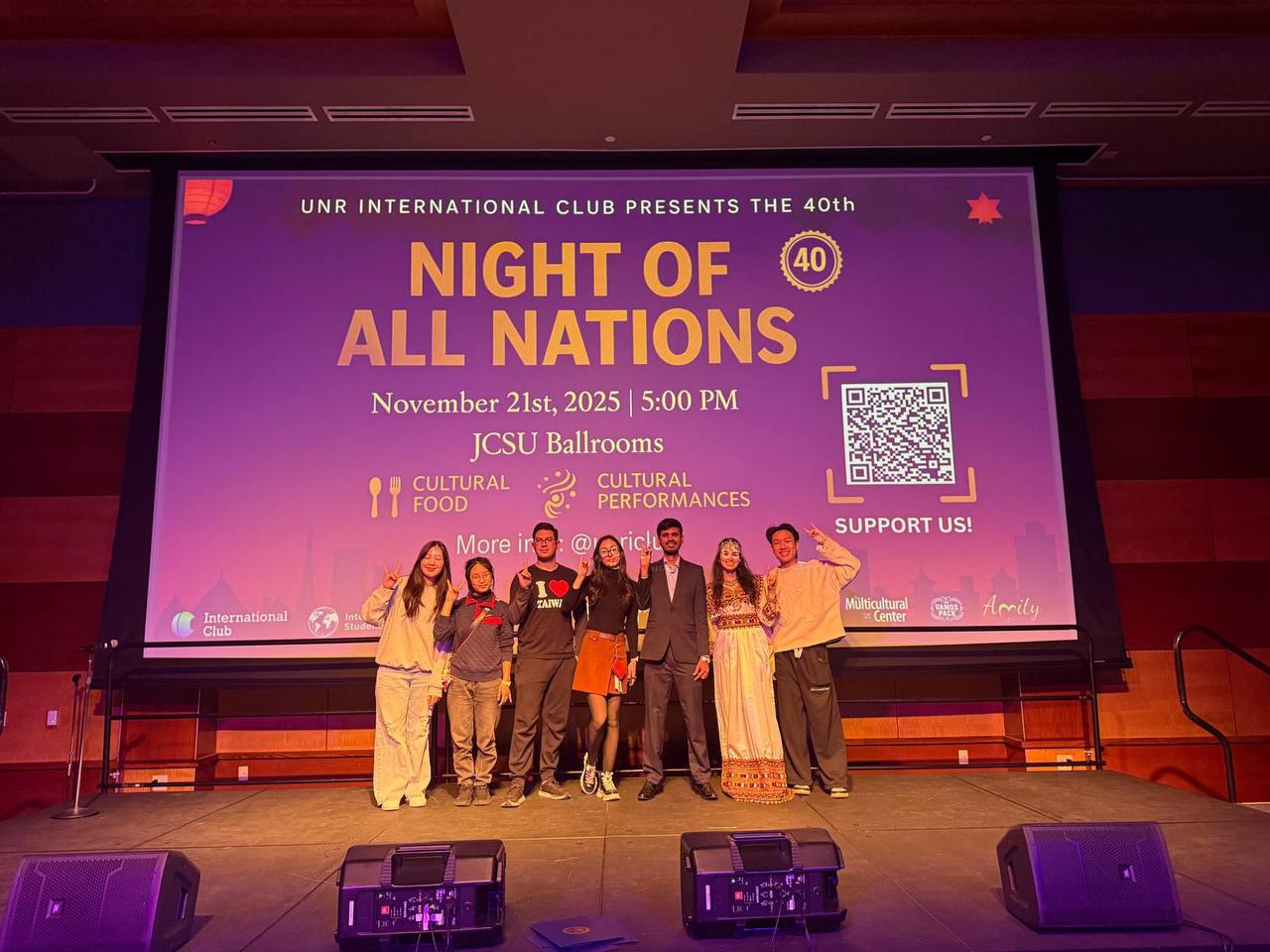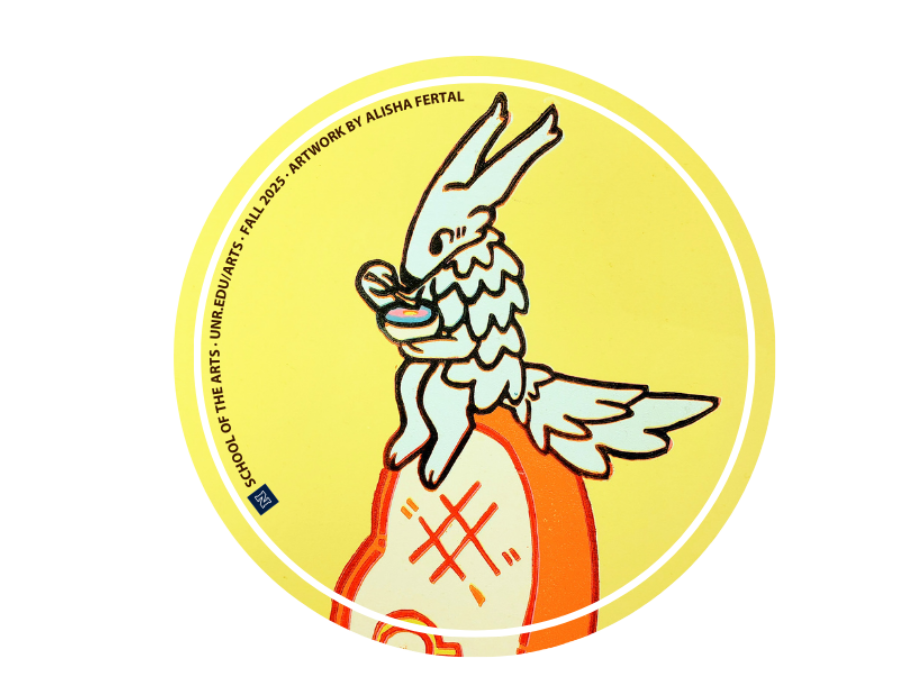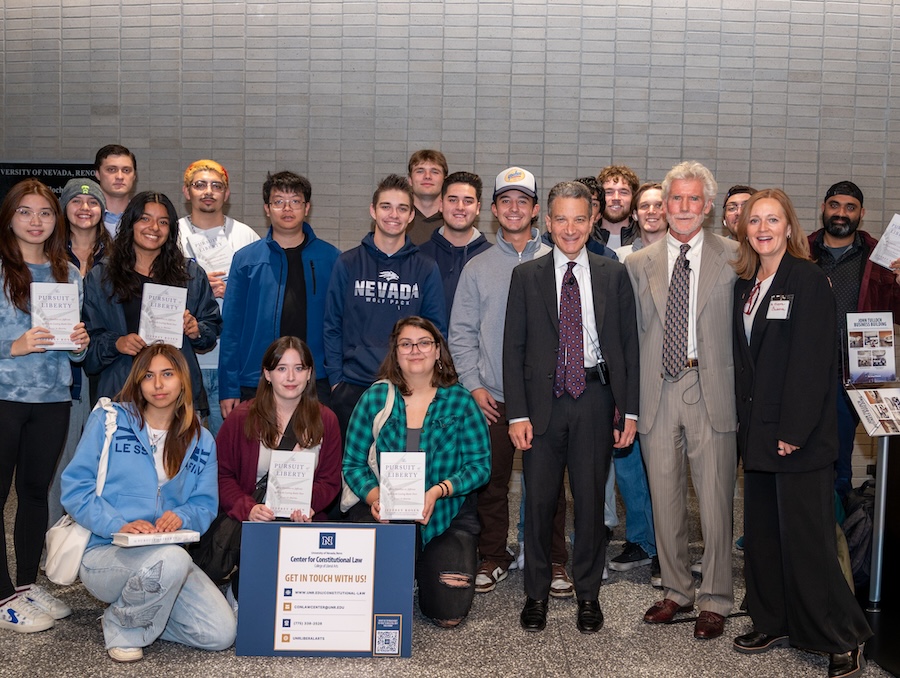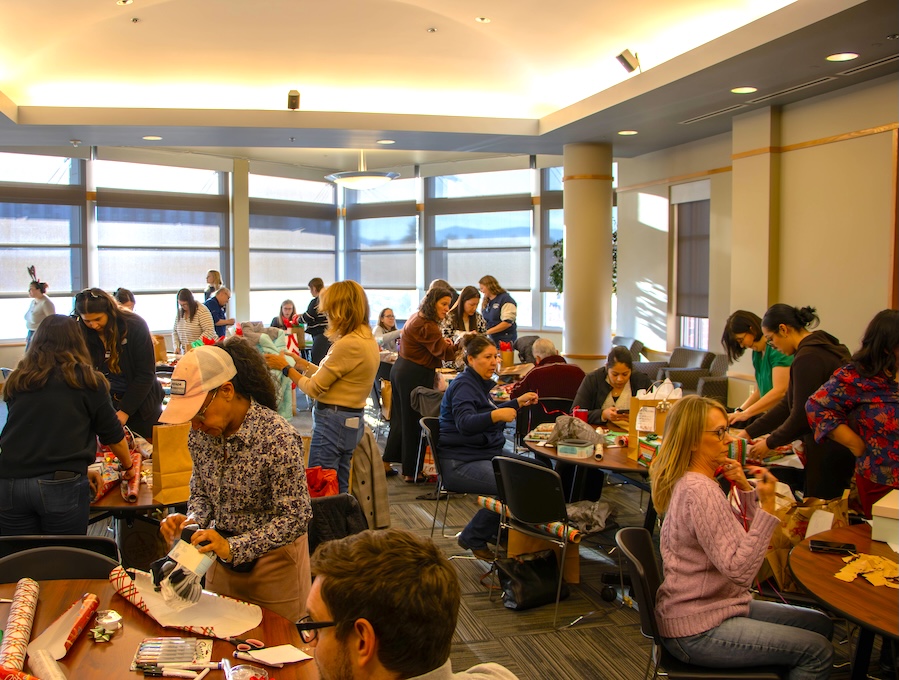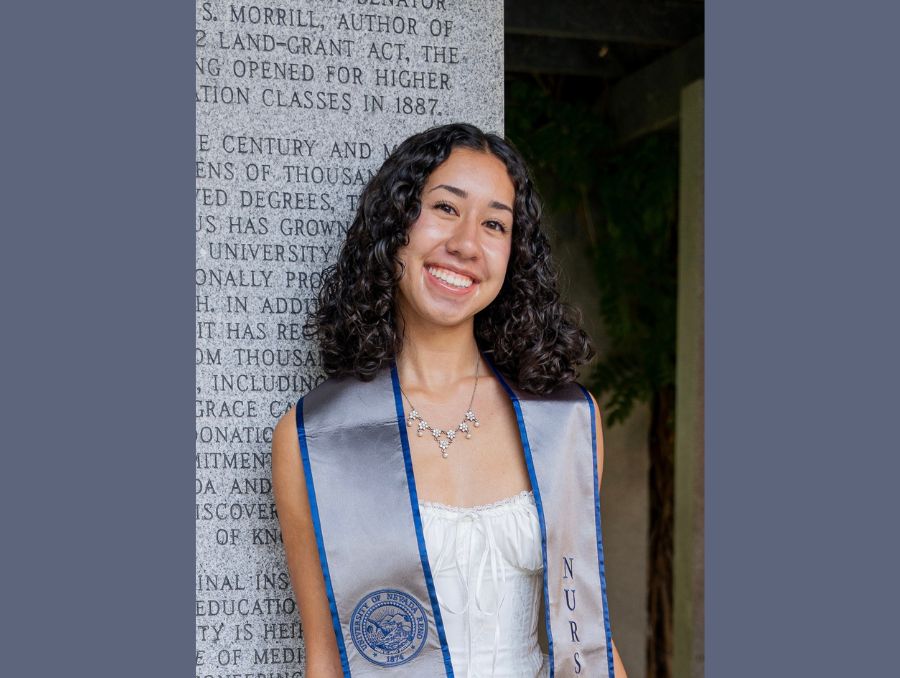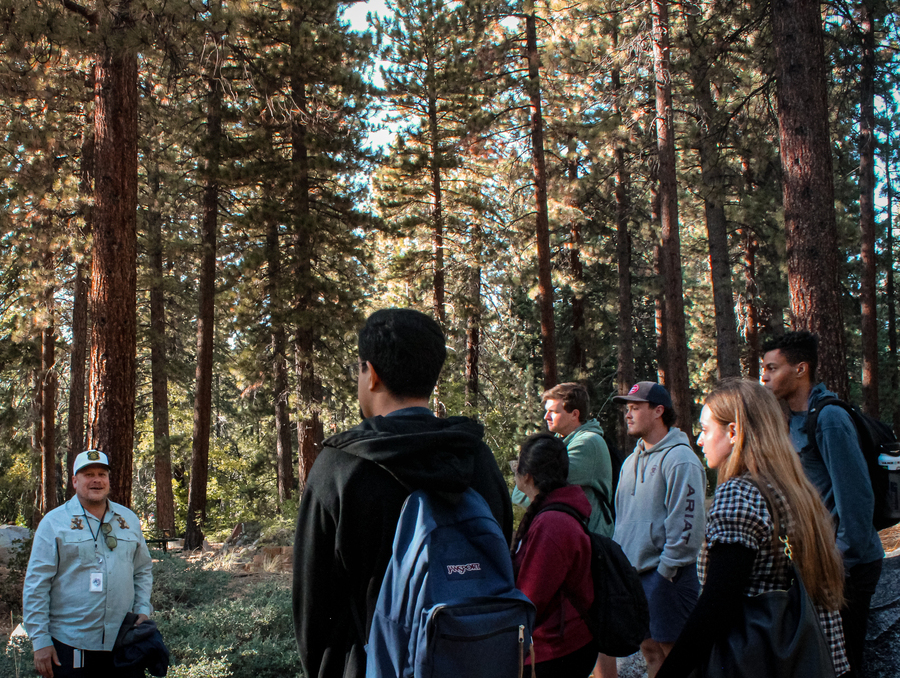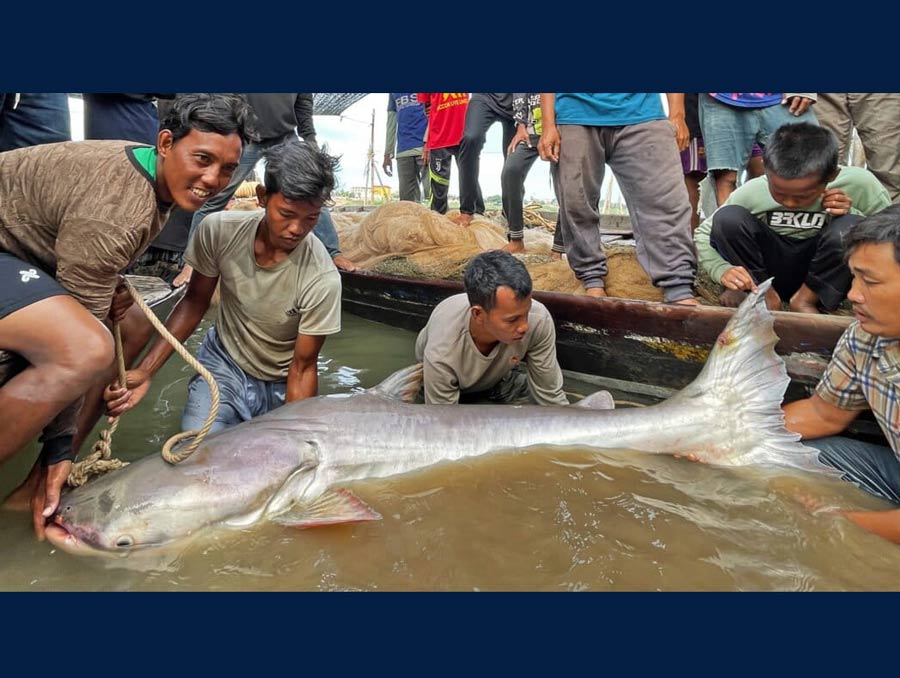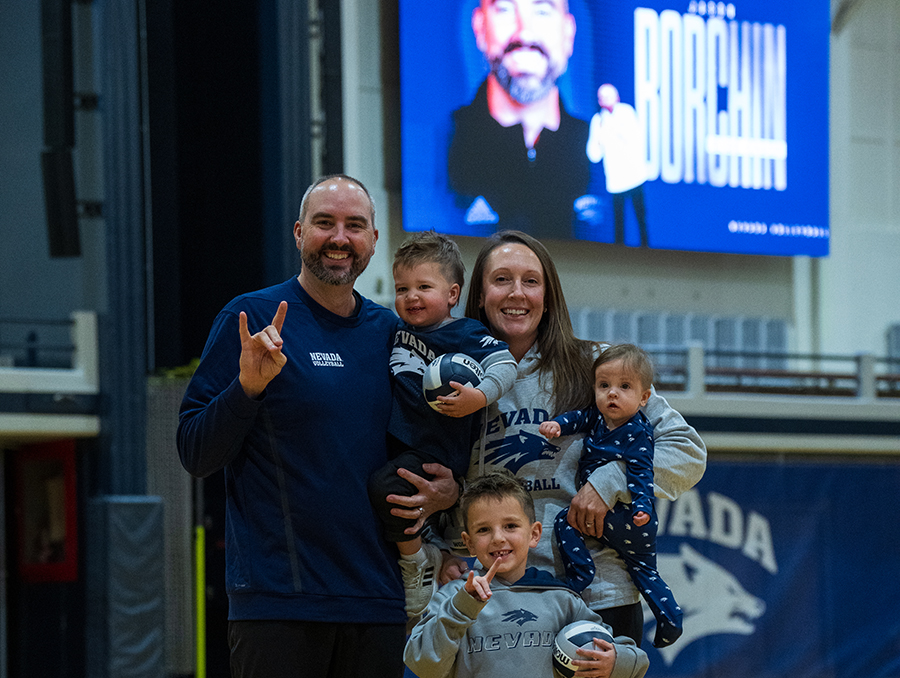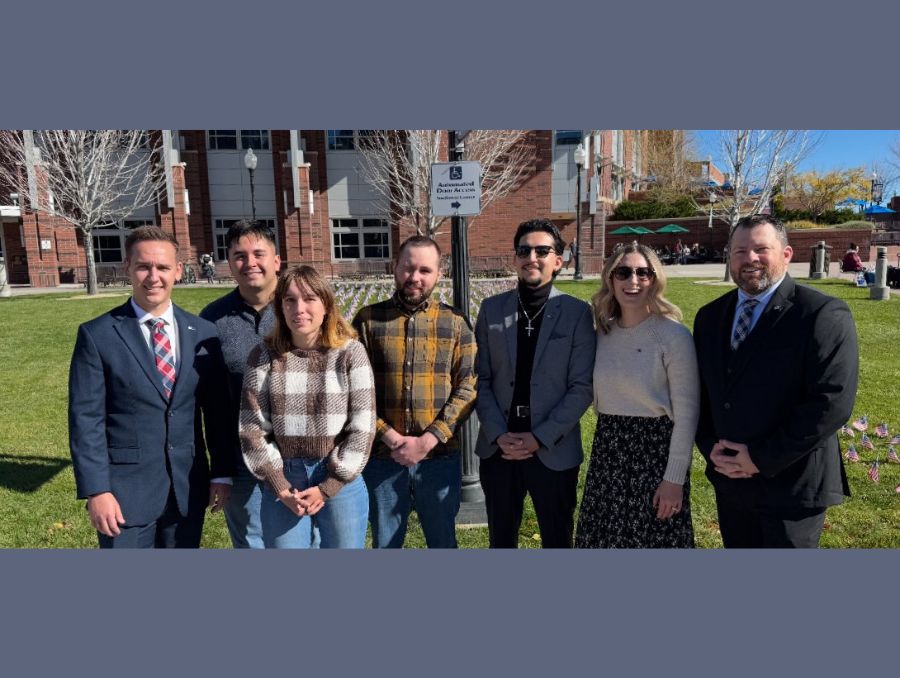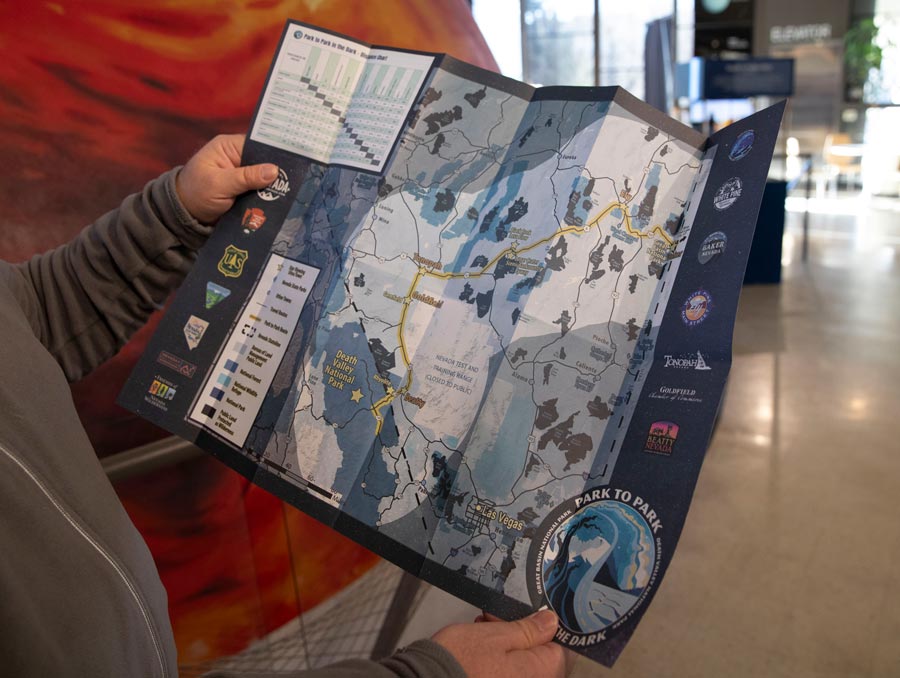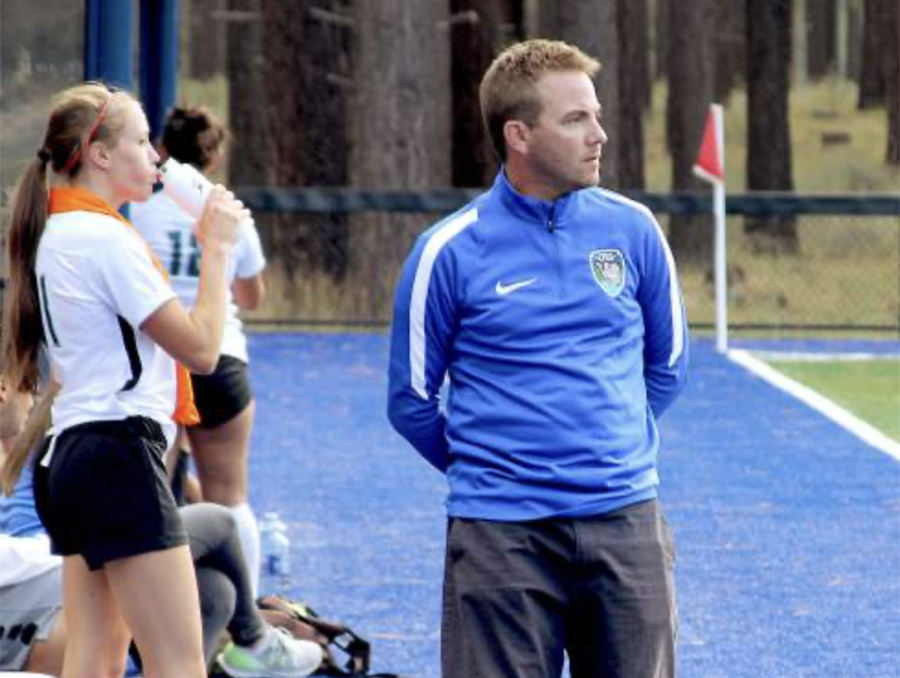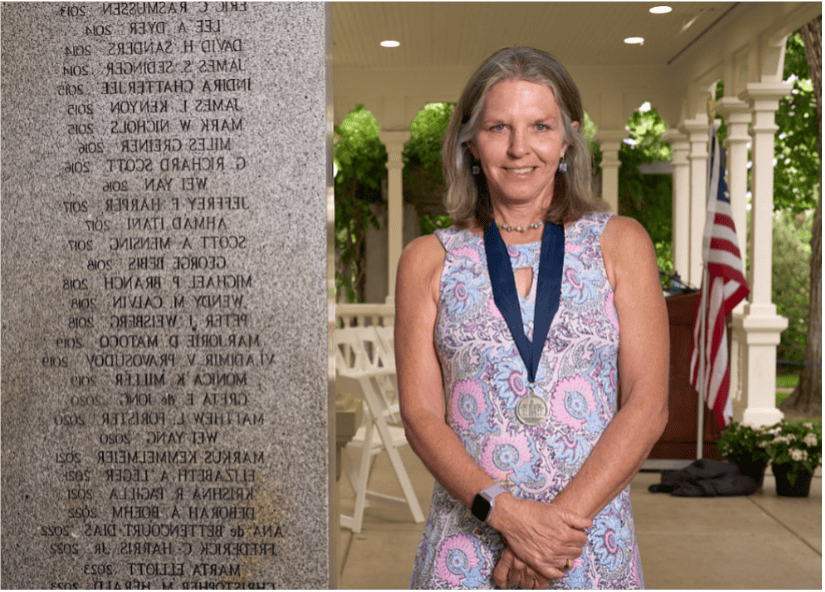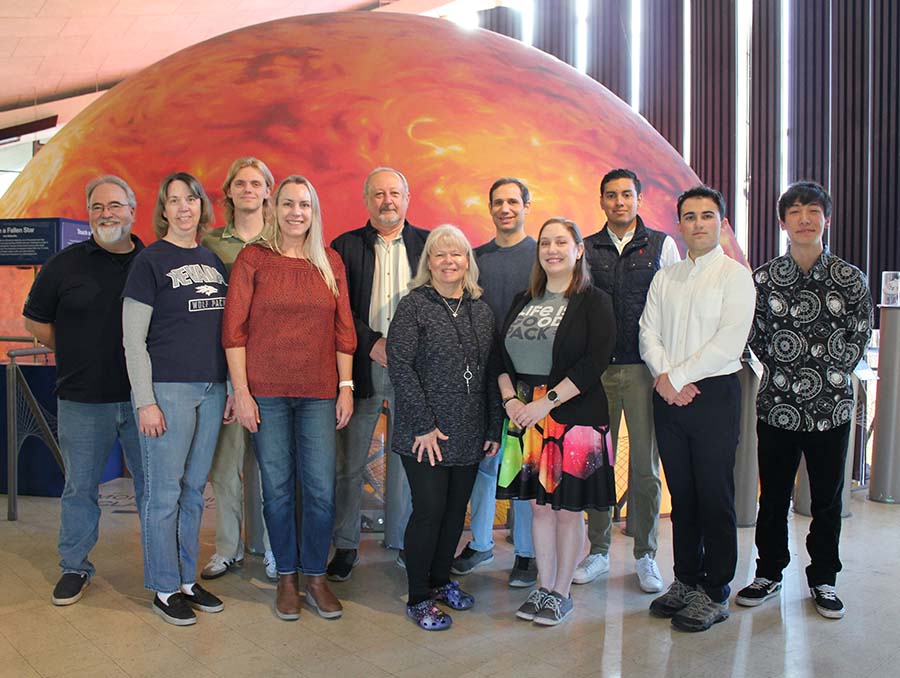Every summer, the Tahoe Gallery at the University of Nevada, Reno at Lake Tahoe pairs artists, scientists, and musicians together to create a collaborative exhibit, encouraging an experimental and interdisciplinary approach to art in the Tahoe Co-Lab. This summer, artists Sasha Petrenko, Associate Professor of Sculpture and Expanded Media at Western Washington University in Bellingham, and Tyler Calkin, Associate Professor of Art at the University of Nevada, Reno are working alongside Sudeep Chandra, Ph. D., Tahoe Institute for Global Sustainability faculty and Foundation Professor of Biology at the University to transform the Tahoe Gallery into a space that explores the relationships between ecology, water, and multi-media art in their exhibition titled ‘Watershed.’
One feature of the Co-Lab is to let the artists interpret their research as they build the space, with no required outcomes or preconceived ideas for the final product. For ‘Watershed,’ the collaborators started working in early summer to brainstorm ideas and built the space in mid-July. The creators hosted an artist reception and exhibit opening on July 17 to discuss the inspiration behind the work, their processes, and how the pieces connect to ongoing dialogue about Lake Tahoe conservation and ecology.
“Learning from Dr. Chandra has been incredibly inspiring and has led to many creative insights during this collaboration,” Calkin said. “We have been trying to record, listen to, and visualize the lake in ways that not everyone usually experiences; we are using specialized equipment such as a hydrophone and 360-degree cameras to record above and within the water of the lake, to be turned into immersive sound and visuals in the gallery. Dr. Chandra's research has also led us toward a contemplation of environmental factors in and around the lake such as water clarity, algae growth and photosynthesis, biodiversity, watersheds, and wildfire and smoke. Some of Sudeep's research is also finding its way into the exhibition as visualized data.”
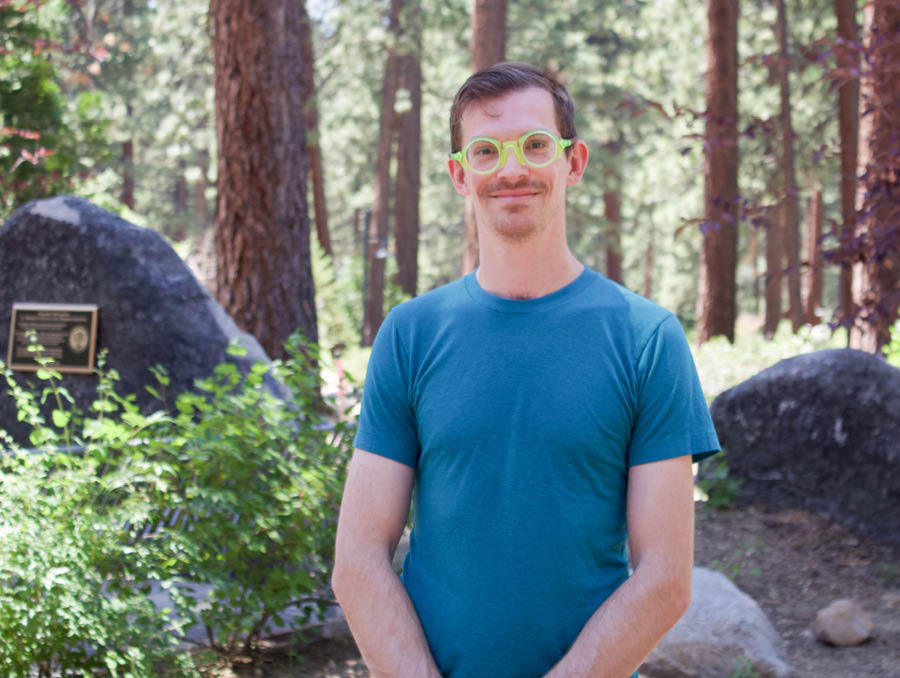
To find inspiration and visuals, the artists went out with a team of divers and scientists to submerge hydrophones and cameras to go look for forests that exist at the bottom of the lake. Dr. Chandra explained that these forests and their species are endemic to Lake Tahoe but have been dwindling from warming water and human interaction with the lake – there is only a fraction of what there used to be.
“The sound there was remarkable,” Petrenko said. “The way that it was reverberating off the underwater forest, sand, sunken wood, and even the boat felt like an instrument. Occasionally, we would hear how people were interacting with the lake with music, boats, and the divers, which we recorded to play in the exhibit so people feel immersed in Lake Tahoe as they navigate the art.”
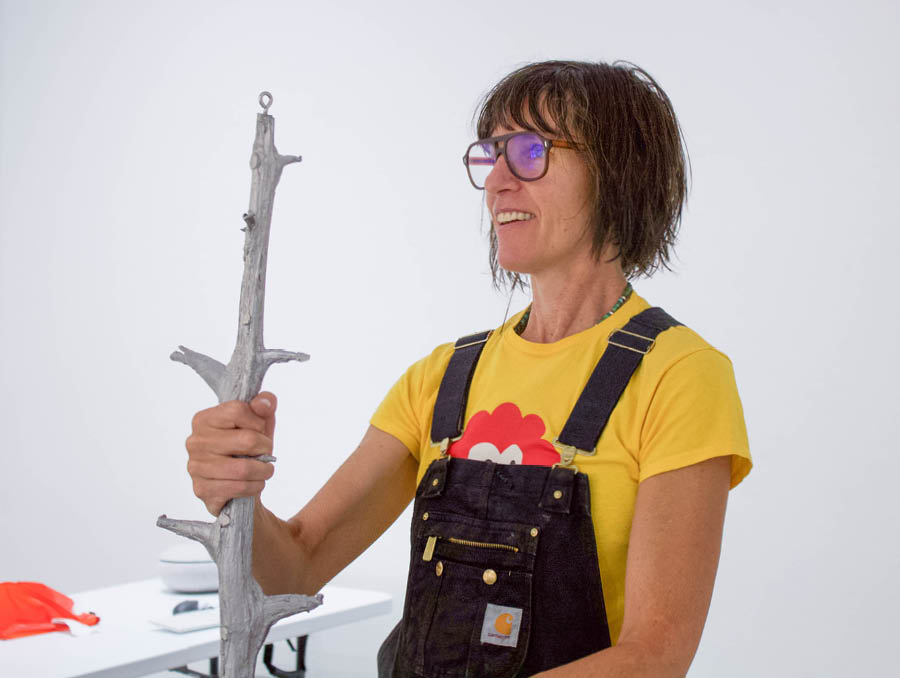
Many pieces in the exhibit are interactive, immersive, and use technology to recreate the local watershed in a new light, including a VR headset that submerges the viewer into the sandy bottom of Lake Tahoe, a sound dome, interactive video, and pieces that alter the viewer’s appearance on a screen.
“As an artist, I ask questions through art making,” Calkin said. “I use technology a lot because I think about how that impacts or influences our behavior. Art is a way to get us to rethink, re-understand, and defamiliarize ourselves from what we expect, and it helps us to see things anew. My art includes a lot of what we are familiar with, like 3D scans or replicas of what we have seen before, but in an unfamiliar setting.”
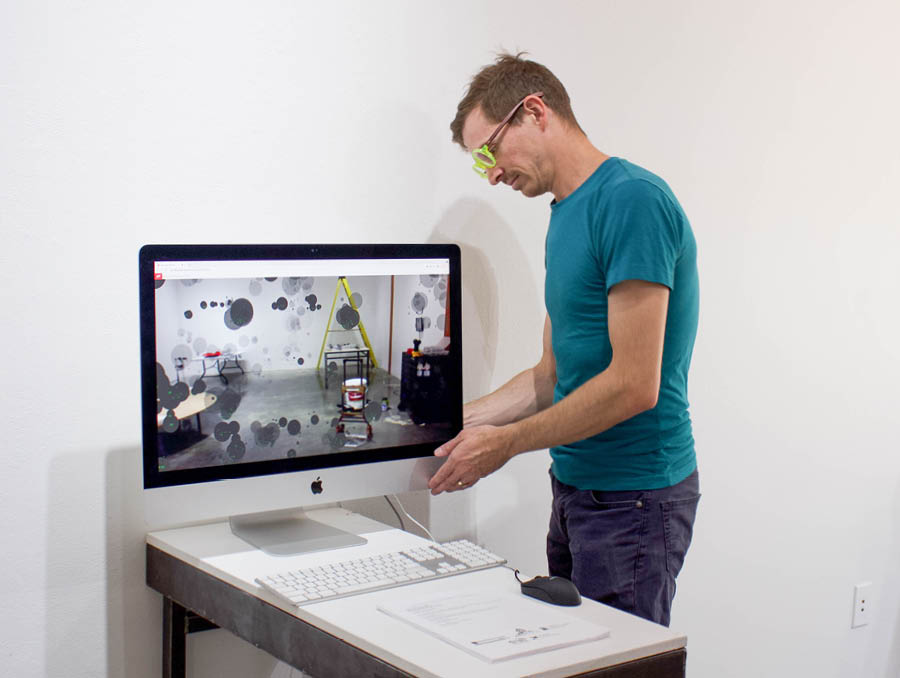
Dr. Chandra, from the Tahoe Institute for Global Sustainability, is on a mission to encourage ongoing interdisciplinary dialogue about Lake Tahoe, including combining art and science. Through the Institute, he hopes to connect more people to the lake, which will help to inform better local, collaborative policy.
“People all interact with Lake Tahoe differently.” Dr. Chandra said. “Bringing interdisciplinary perspectives into the conversation – including science and art – are integral in promoting balanced and effective decision-making on policy. This art exhibit offers a chance for viewers to reimagine how they interact with the lake and inspire them to see new perspectives and participate in dialogue about the beautiful landscape around us.”
The exhibit is now open from 9 a.m. – 5 p.m. through September in the Tahoe Gallery at the University of Nevada, Reno at Lake Tahoe.
